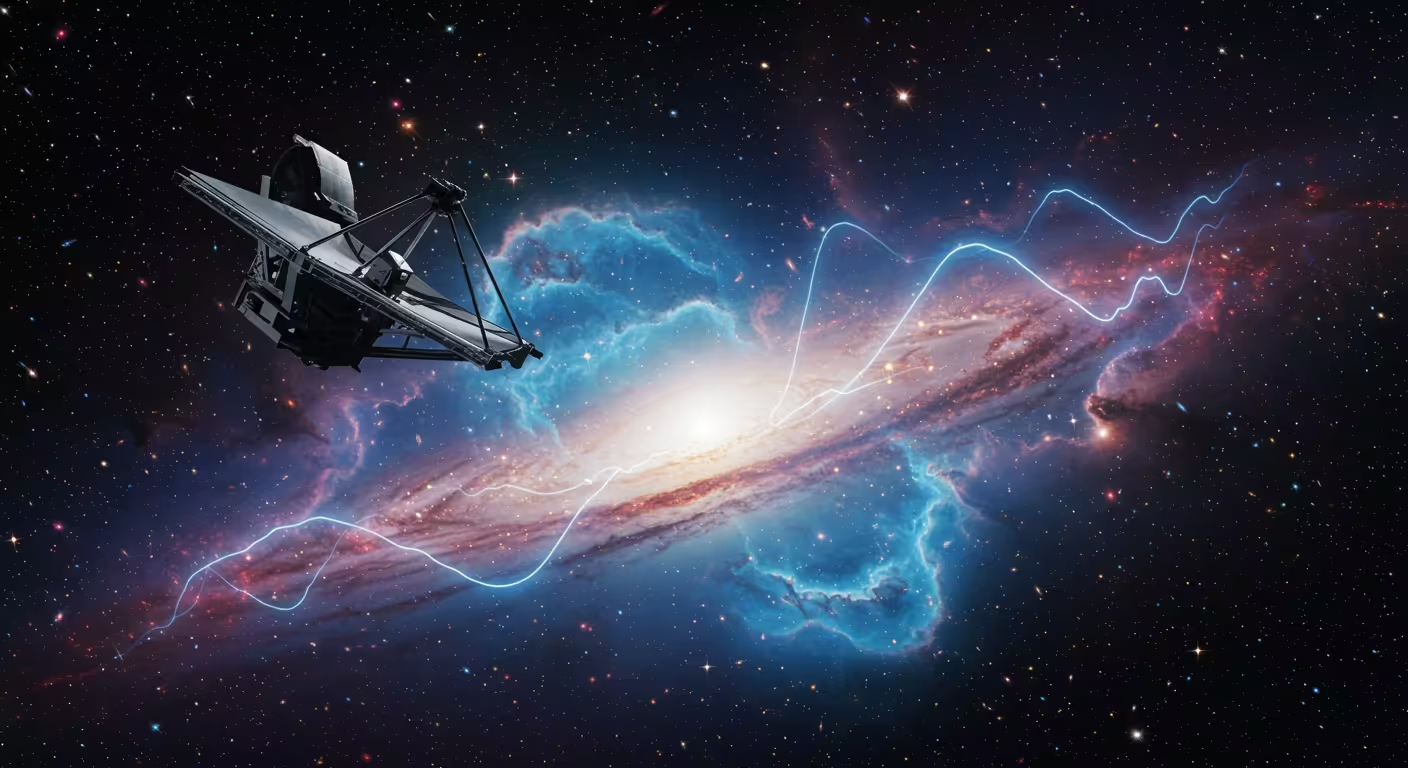- Sections
- Ruby
- Web Development
- Artificial Intelligence
- Urban Planning
- Astronomy
- Issue Navigation
- Previous Issue
- Next Issue
Friday, May 16, 2025
The Digital Press
All the Bits Fit to Print
Friday, May 16, 2025
All the Bits Fit to Print
Joint JWST and ALMA study reveals multi-zone electron densities and metallicity evolution in early galaxies

A new study using JWST and ALMA observations reveals that high-redshift galaxies have complex interstellar mediums with varying gas densities and metallicities. Combining optical and far-infrared emission lines uncovers discrepancies in density measurements and improves metallicity estimates.
Why it matters: Understanding gas densities and metallicities in early galaxies helps clarify galaxy formation and evolution in the young universe.
The big picture: FIR [OIII] emission mainly arises from low-density gas, while optical lines trace both low- and high-density regions, requiring multi-zone models.
Stunning stat: Electron densities from optical lines average around 1000 cm⁻³, but FIR-based densities are below 500 cm⁻³, showing systematic differences.
Quick takeaway: Relying only on optical lines can underestimate metallicities by up to 0.8 dex; combining FIR and optical lines yields more accurate results.